On Sunday (January 23), the 125th birth anniversary of Subhas Chandra Bose, PM Narendra Modi unveiled a hologram statue of Netaji in the empty canopy behind India Gate in New Delhi.
In a few months’ time, the virtual statue will be replaced with a solid granite statue of Bose.
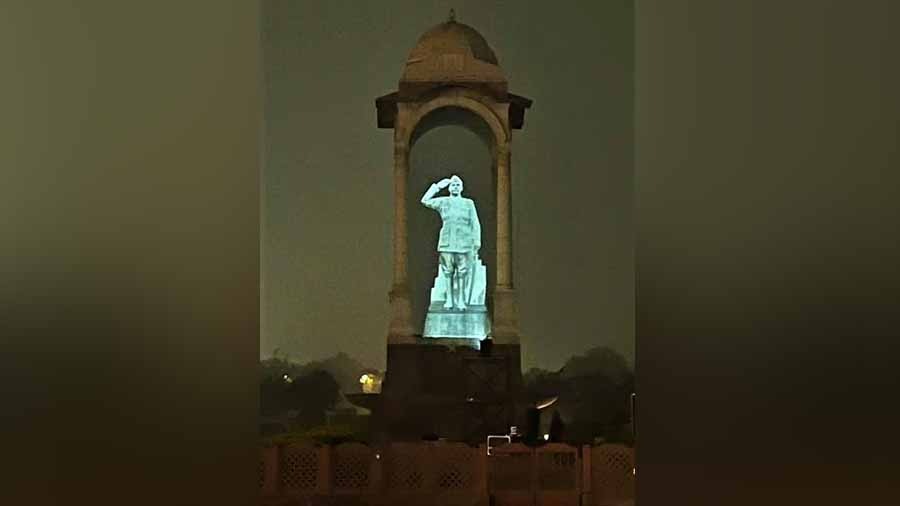
The hologram of Netaji will be replaced with a solid granite statue in a few months
However, this canopy wasn’t always empty. A towering marble statue of King George V, dressed in a flowing robe and complete with globus cruciger and sceptre, occupied the canopy till 1968. It was created by the famous sculptor Charles Sargeant Jagger.
The canopy stands on the junction of six roads and is located about 150 metres east of India Gate and was part of the Kingsway (now Rajpath) designed by Edwin Lutyens. “This was Rajpath – once the Kingsway – one of the greatest ceremonial ways of the world. It was planned as an Imperial Champs Elysees – complete with India Gate, its own butter coloured Arc de Triomphe. But it was far wider, far greener, far more magnificent than anything comparable in Europe,” author William Dalrymple mentions in his book, City of Djinns.
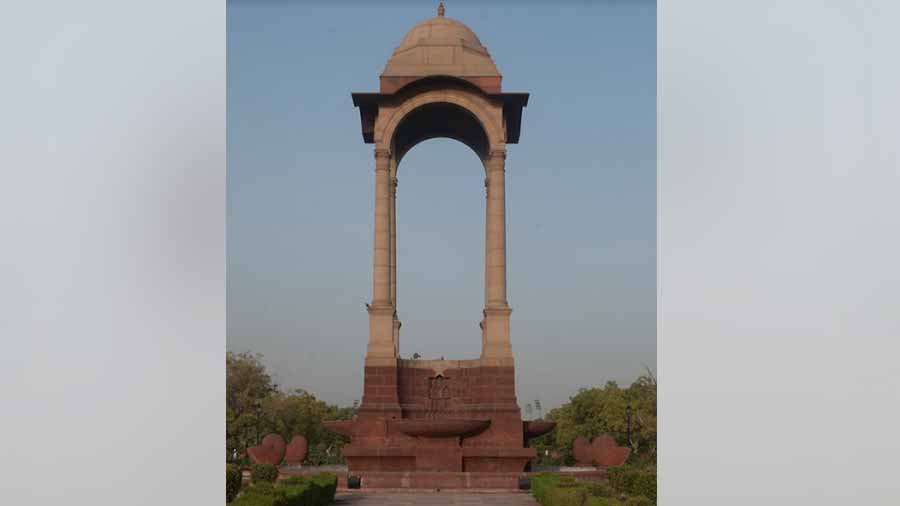
The canopy is located about 150 metres east of India Gate and is a part of Rajpath Rangan Datta
In the mid-1960s, India was witnessing a removal of colonial statues from public view from major cities. Kolkata had its statues removed to Lat Bagan in the cantonment town of Barrackpore. In Delhi, the statues, including the one of King George, was removed to Coronation Park in the northern end of Delhi.

Another colonial-era statue at Coronation Park Rangan Datta
Being in a military area, the statues removed from Kolkata are now out of reach of the general public, but it’s not so in Delhi. Coronation Park is a public park, but despite its open access, few Delhiites ever visit the park.
Interestingly, the Coronation Park has its own historical importance. It was the venue of three Delhi Durbars – in 1873, 1903 and 1911. The last one being the coronation of George V, and hence the name. The first durbar in 1873 was held to proclaim Queen Victoria as Empress of India. The second in 1903 to celebrate the coronation of King Edward VII. The last and the final durbar was held on Dec 12, 1911, to commemorate the coronation of George V (the original coronation was held on June 22, 1911, in London).
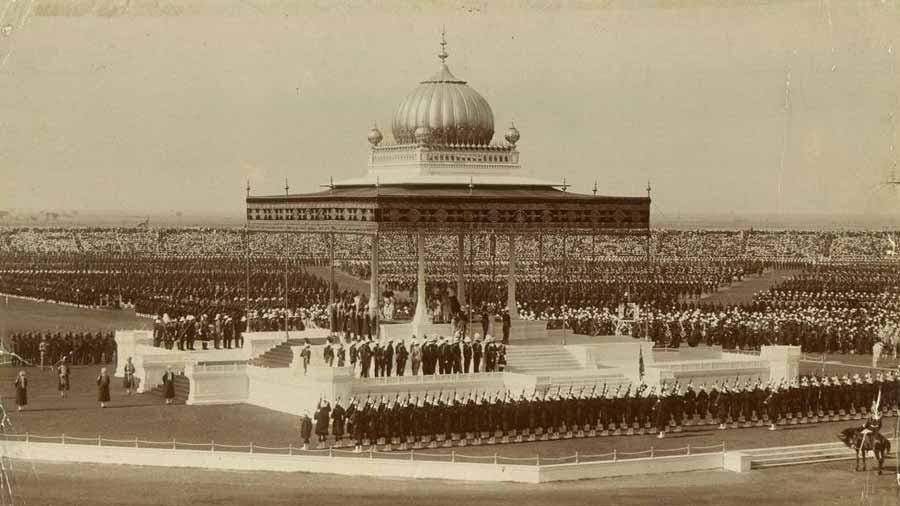
The Delhi Durbar of 1911, where among other things, George V announced moving India’s capital from Calcutta to Delhi
It was attended by King George V and Queen Mary. It was also at this durbar that the emperor announced the move of India’s capital from Calcutta to Delhi. The towering Coronation Memorial (built as an obelisk) was also erected after that durbar. Made of sandstone, it is constructed over a square plinth with steps on all four sides. The memorial was erected at exactly the same location where all the three British Durbars were held in the past. The inscriptions in English and Urdu on the Memorial testify the final Durbar event.
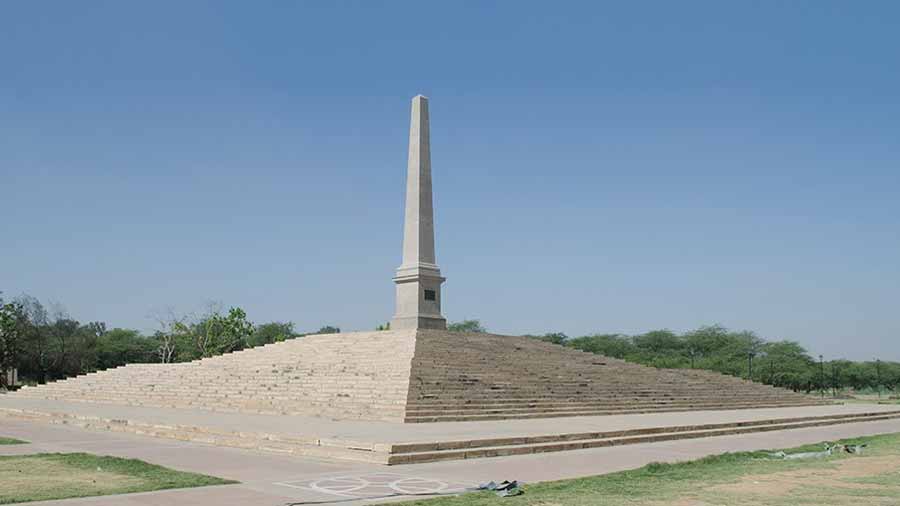
The towering Coronation Memorial Rangan Datta
Later, in the 1960s, several colonial-era statues of Delhi, including the one of George V, were removed to the Coronation Park. Nineteen pedestals were set up to house other statues of British officials with the George V statue in the middle. But not all the statues made it to the Coronation Park.
Even after the removal of the statues, nothing was done to beautify the park. William Dalrymple further noted in his book (published in 1993), “Creepers tangle through the folds in the robes; grass greens the Crown Imperial…. Although the statue is only sixty years old, the world it came from seems as distant as that of Rameses II.”

The emperor has no nose: The damaged statue of George V at Coronation Park TT archives (file photo 2018)
But things took a turn in 2011 (centenary of the last durbar), the Delhi Development Authority took up the initiative of restoring the Coronation Park. The layout of the park was totally changed. The towering Coronation Memorial occupies the central stage and the statue of George V stands behind it. The pedestals arranged in a semi-circle were removed and presently only four statues stand at the four corners of the memorial.
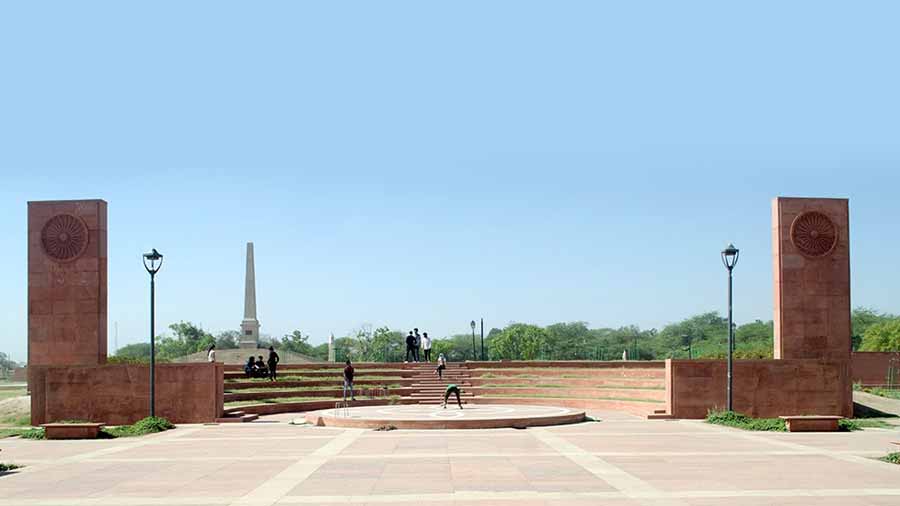
The amphitheatre at Coronation Park Rangan Datta
An amphitheatre, water bodies and a children’s play area have been built. A restaurant and an Interpretation Centre, with the history of India since 1857, including the three durbars, is also on the cards.
Sadly though, work has progressed slowly. But hopefully, recent events will motivate history buffs and heritage seekers to visit Coronation Park and have a look at the statue that once occupied the canopy behind India Gate – where Netaji will now stand.
Rangan Datta is a mathematics and management teacher by profession and a travel writer and photographer by passion. He has been addicted to discovering off-beat places since his undergraduate days at St. Xavier's College. Blogging and contributing to Wikipedia are his other passions.
